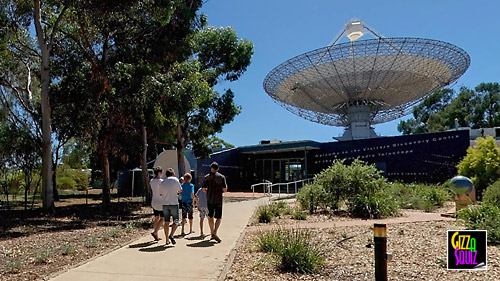
Astronomers have speculated the signals could come from evaporating black holes, or even from distant alien civilisations.
The high-energy radio bursts last for just a few milliseconds, but their sources are thought to emit as much energy in that time as the Sun does in an entire day.
The source of the signal captured by CSIRO’s Parkes radio telescope in Australia could be as distant as 5.5 billion light years away.
‘Fast radio bursts’ last for mere milliseconds, and were first discovered in 2007 – but no scientists have ever intercepted one happening ‘live’ before.
The new discovery brings us a step closer to understanding the phenomenon.
Lasting only milliseconds, the first such radio burst was discovered in 2007 by astronomers combing the Parkes data archive for unrelated objects.
Six more bursts, apparently from outside our galaxy, have now been found with Parkes and a seventh with the Arecibo telescope in Puerto Rico.
‘These bursts were generally discovered weeks or months or even more than a decade after they happened! We’re the first to catch one in real time,’ said Emily Petroff, a PhD candidate.
Is this evidence of an alien civilisation?
- Yes
- No
After Parkes saw the burst go off the team swung into action on twelve telescopes around the world — in Australia, California, the Canary Islands, Chile, Germany, Hawai’i, and India — and in space.
No optical, infrared, ultraviolet or X-ray counterpart showed up. ‘That in itself rules out some possible candidates, such as long gamma-ray bursts and nearby supernovae,’ said team member Dr. Mansi Kasliwal of the Carnegie Institution in Pasadena, California.
But short or low-energy gamma-ray bursts and giant flares from distant magnetars (the most magnetic stars in the universe) are still contenders, she added. So too are imploding neutron stars.
One of the big unknowns of fast radio bursts is their distances. The characteristics of the radio signal — how it is ‘smeared out’ in frequency from travelling through space — indicate that the source of the new burst was up to 5.5 billion light-years away.
‘That means it could have given off as much energy in a few milliseconds as the Sun does in a day,’ said team member Dr. Daniele Malesani of the University of Copenhagen.
Polarization can be thought of as the direction electromagnetic waves, such as light or radio waves, ‘vibrate.’ It can be linear or circular. The radio emission from the new fast radio burst was more than 20% circularly polarized — which hints that there are magnetic fields near the source.
Identifying the origin of the fast radio bursts is now only a matter of time.
‘We’ve set the trap,’ said Petroff. ‘Now we just have to wait for another burst to fall into it.’
Nigel Watson, author of the UFO Investigations Manual (Haynes), says, ‘Every unusual signal from outer space encourages us to wonder if it is from an alien civilisation.
‘It would be fantastic if this is an alien signal as the knowledge that we are not alone in this vast universe would have a dramatic impact on our perception of our place in the scheme of things.’
‘It would certainly give the opportunity for UFO spotters to say we told you aliens exist – and you didn’t believe us!’
Source
No comments:
Post a Comment
Note: Only a member of this blog may post a comment.